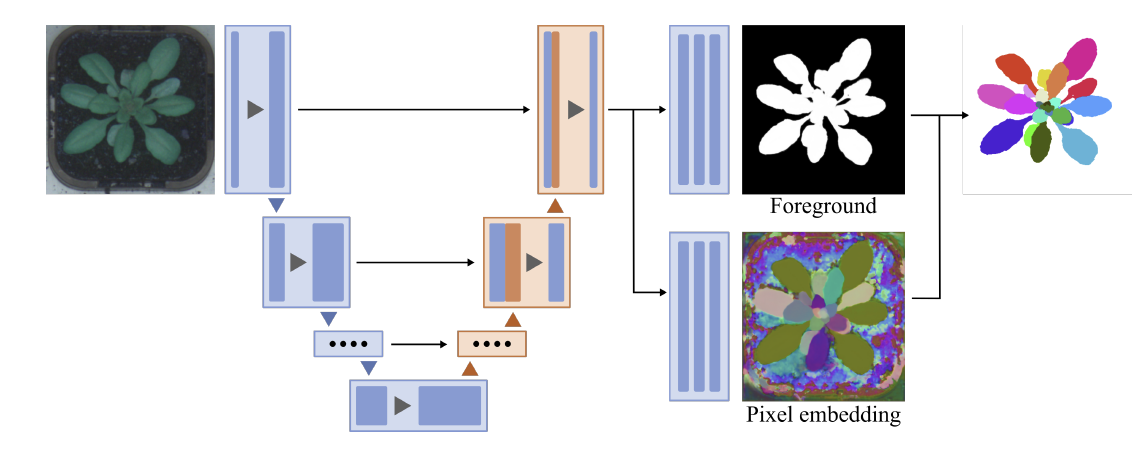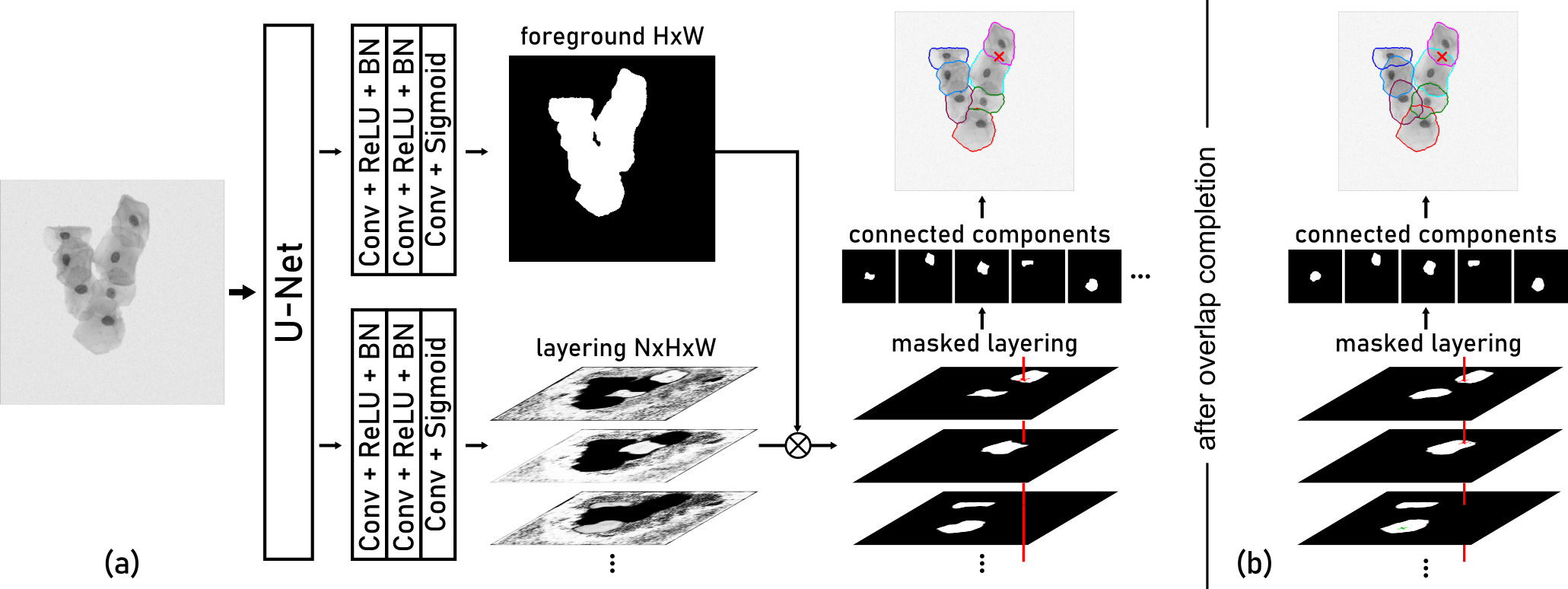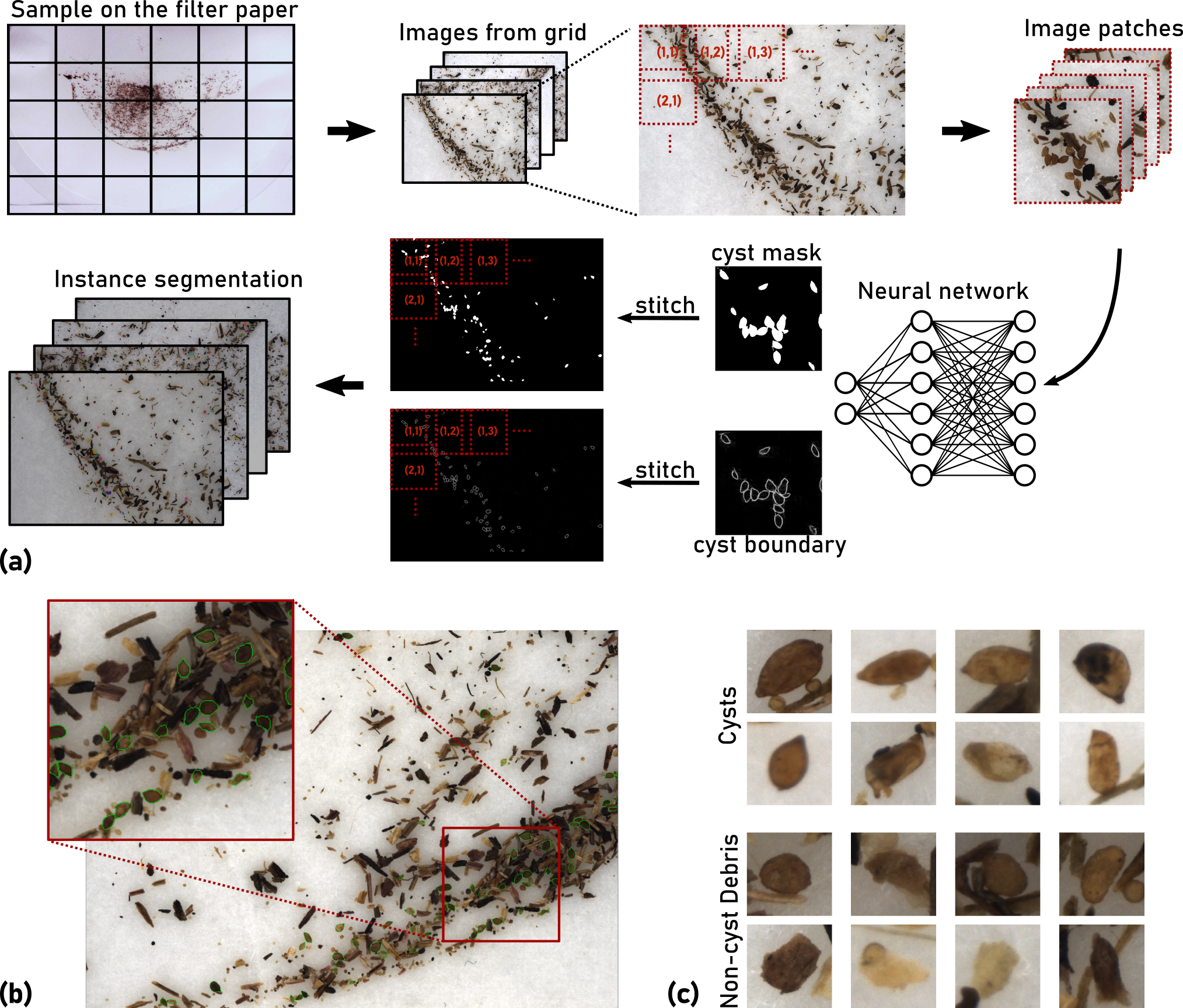- Learning Instance-Discriminative Pixel Embeddings Using Pixel Triplets
Long Chen and Dorit Merhof

Abstract: Clustering pixels based on learned instance-discriminative pixel embeddings is a promising approach for the instance segmentation task, particularly with highly cluttered objects. The pixel embedding space is typically trained with proxy-based losses due to the large number of pixel samples. However, we have found that training guided by randomly sampled pixel triplets is not only feasible but also consistently yields better results. With our proposed loss, a basic convolution-based model achieves state-of-the-art results, with minimal pre- and post-processing, on a variety of biomedical datasets: FluoDSB (fluorescence cell), CVPPP (Arabidopsis leaf), Celegans (C. elegans nematode), and Neuroblastoma (cultured neuroblastoma cell).
- SortedAP: Rethinking Evaluation Metrics for Instance Segmentation
Long Chen, Yuli Wu, Johannes Stegmaier and Dorit Merhof

Abstract: Designing metrics for evaluating instance segmentation revolves around comprehensively considering object detection and segmentation accuracy. However, other important properties, such as sensitivity, continuity, and equality, are overlooked in the current study. In this paper, we reveal that most existing metrics have a limited resolution of segmentation quality. They are only conditionally sensitive to the change of masks or false predictions. For certain metrics, the score can change drastically in a narrow range which could provide a misleading indication of the quality gap between results. Therefore, we propose a new metric called sortedAP, which strictly decreases with both object- and pixel-level imperfections and has an uninterrupted penalization scale over the entire domain. We provide the evaluation toolkit and experiment code here.
- Instance Segmentation of Dense and Overlapping Objects via Layering
Long Chen, Yuli Wu and Dorit Merhof

Abstract: Instance segmentation aims to delineate each individual object of interest in an image. State-of-the-art approaches achieve this goal by either partitioning semantic segmentations or refining coarse representations of detected objects. In this work, we propose a novel approach to solve the problem via object layering, i.e. by distributing crowded, even overlapping objects into different layers. By grouping spatially separated objects in the same layer, instances can be effortlessly isolated by extracting connected components in each layer. In comparison to previous methods, our approach is not affected by complex object shapes or object overlaps. With minimal post-processing, our method yields very competitive results on a diverse line of datasets: C. elegans (BBBC), Overlapping Cervical Cells (OCC) and cultured neuroblastoma cells (CCDB). The source code is publicly available.
- High-throughput phenotyping of nematode cysts
Long Chen, Matthias Daub, Hans-Georg Luigs, Marcus Jansen, Martin Strauch and Dorit Merhof

Abstract: The beet cyst nematode Heterodera schachtii is a plant pest responsible for crop loss on a global scale. Here, we introduce a high-throughput system based on computer vision that allows quantifying beet cyst nematode infestation and measuring phenotypic traits of cysts. After recording microscopic images of soil sample extracts in a standardized setting, an instance segmentation algorithm serves to detect nematode cysts in these images. In an evaluation using both ground truth samples with known cyst numbers and manually annotated images, the computer vision approach produced accurate nematode cyst counts, as well as accurate cyst segmentations. Based on such segmentations, cyst features could be computed that served to reveal phenotypical differences between nematode populations in different soils and in populations observed before and after the sugar beet planting period. The computer vision approach enables not only fast and precise cyst counting, but also phenotyping of cyst features under different conditions, providing the basis for high-throughput applications in agriculture and plant breeding research. Source code and annotated image data sets are freely available for scientific use.